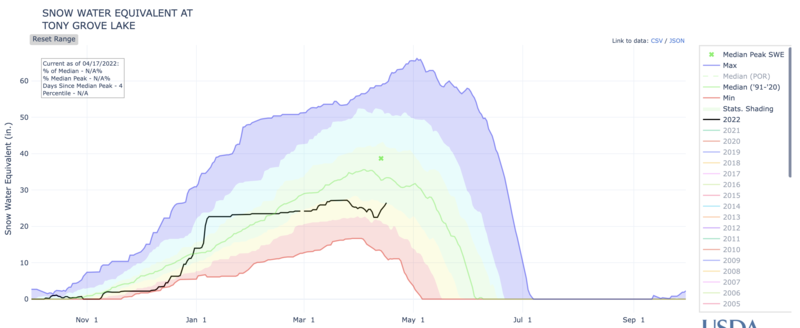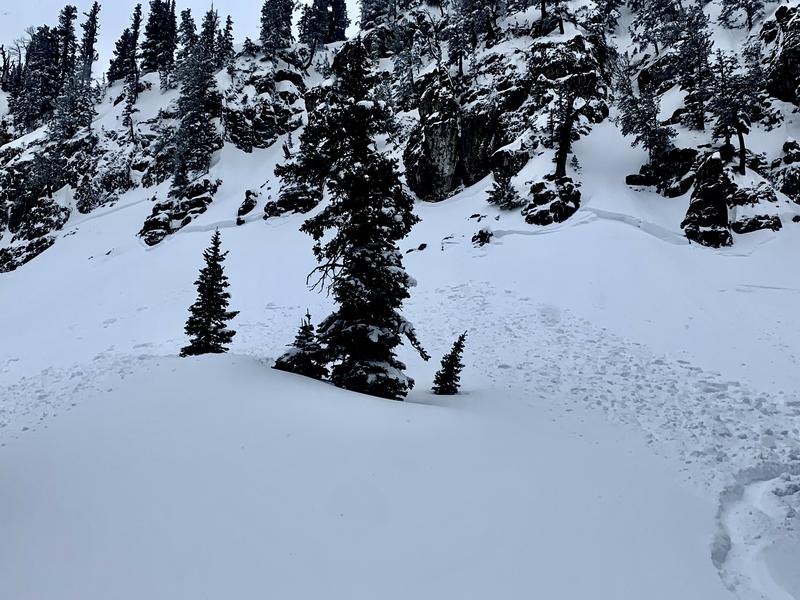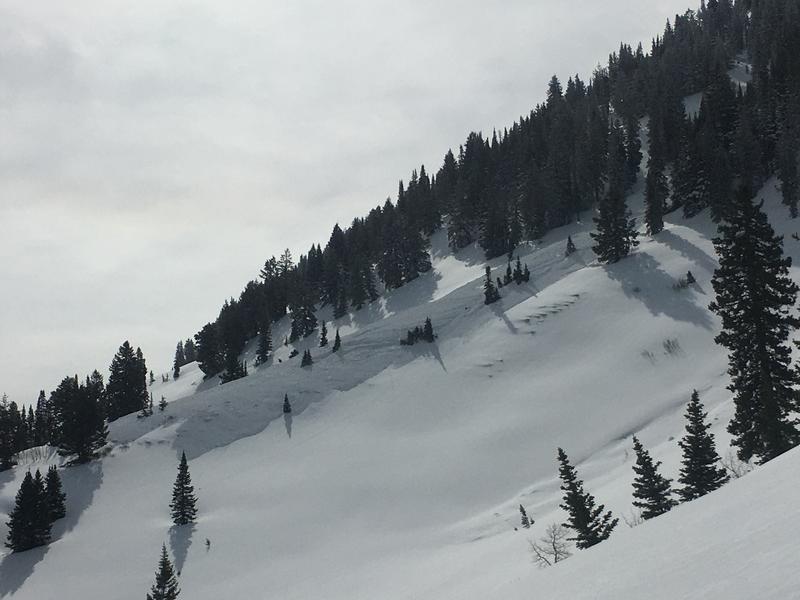Today is our last regular avalanche forecast but we will continue posting observations and avalanches. Thanks for a great season!
The 8400' Tony Grove Snotel reports 25°F this morning, and there is 71 inches of total snow at the site, containing 77% of normal SWE. Westerly winds are currently blowing around 18 mph at the 9700' CSI Logan Peak weather station with gusts in the 20's. The mountains picked up a few more inches of snow overnight.
This week's powder riding conditions are a thing of the past as seasonal temperatures took their toll yesterday. Today the snow surface will likely either be damp or refrozen with a dusting of new snow.
Today there is a 20% chance of snow showers before noon. Afternoon skies will be partly cloudy, temperatures will be near 36 and westerly winds will blow 18 to 21 mph, with gusts as high as 32 mph. Tonight will be partly cloudy, with a low around 23 with west winds bowing 11 to 18 mph becoming south after midnight. Monday expect sunny skies, temperatures near 51, and south-southwest winds blowing 13 to 21 mph, with gusts as high as 32 mph.
In addition to providing a few bonus powder days, this past week's wet weather (4.9" SWE total since Monday) moved us a bit closer to the average for the season.
Multiple soft slab and wind slab, natural and human-triggered avalanches were reported Friday and Saturday. All occurred above 9000' on NE through E-facing slopes and ranged in width from 100' to 1000' wide.
This snowmobile-triggered avalanche in White Pine Canyon was 2' deep and 1000' wide. (PC: Hawley)
This natural wind slab avalanche, reported Saturday, occurred at 9200' on a NE-facing slope. (PC: Choi)
Check out all the recent backcountry observations and avalanche reports from across Utah
HERE.













